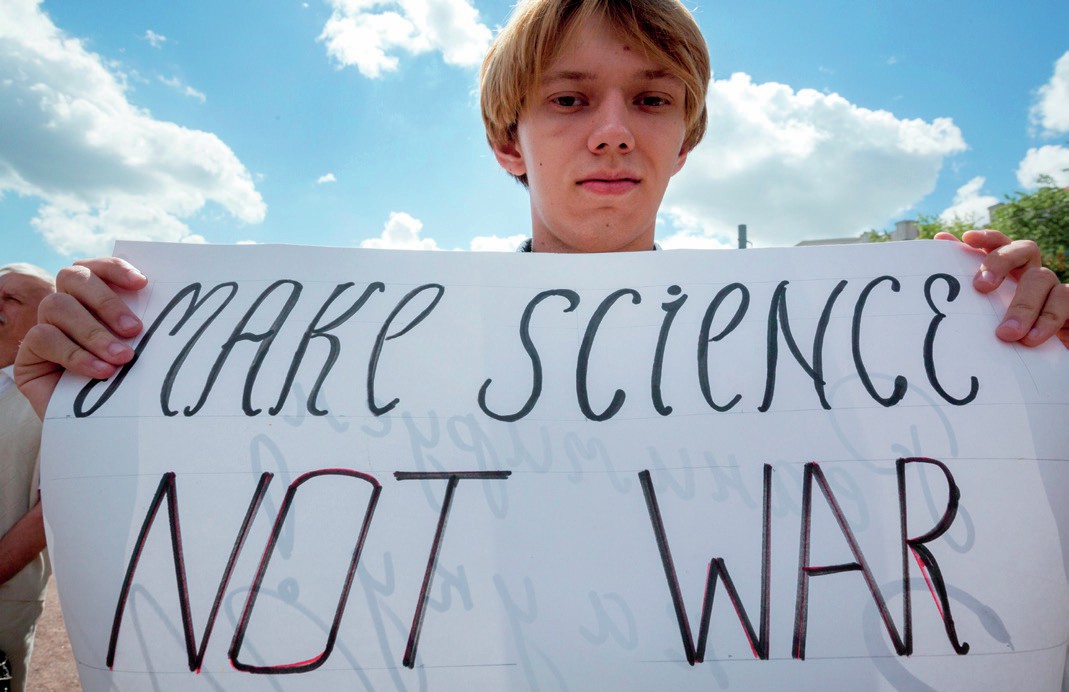
This year marks the cententary of the end of the First World War. Over the past century, science and warfare have become closely linked. In times of war, governments tend to increase funding of projects aimed at developing weapons and defence systems, and to direct scientists to work on such projects. While this can lead to great progress in scientific knowledge and understanding, which may also have peaceful applications, there is a huge price to pay in terms of destruction and loss of life.
The use of science in warfare presents a dilemma for scientists. Some see it as their patriotic duty to help their own country to attack its enemies and defend its own people as effectively as possible, while others feel strongly that they should not contribute to any project whose aim is so destructive, and that they should protest against such projects (Figure 1). After the Second World War, physicists who had worked on nuclear bomb projects played a key role in setting up the Pugwash Conferences on Science and World Affairs — an international movement involving scientists and politicians dedicated to reducing armed conflict and seeking solutions to global security threats (Figure 2).
Your organisation does not have access to this article.
Sign up today to give your students the edge they need to achieve their best grades with subject expertise
Subscribe
